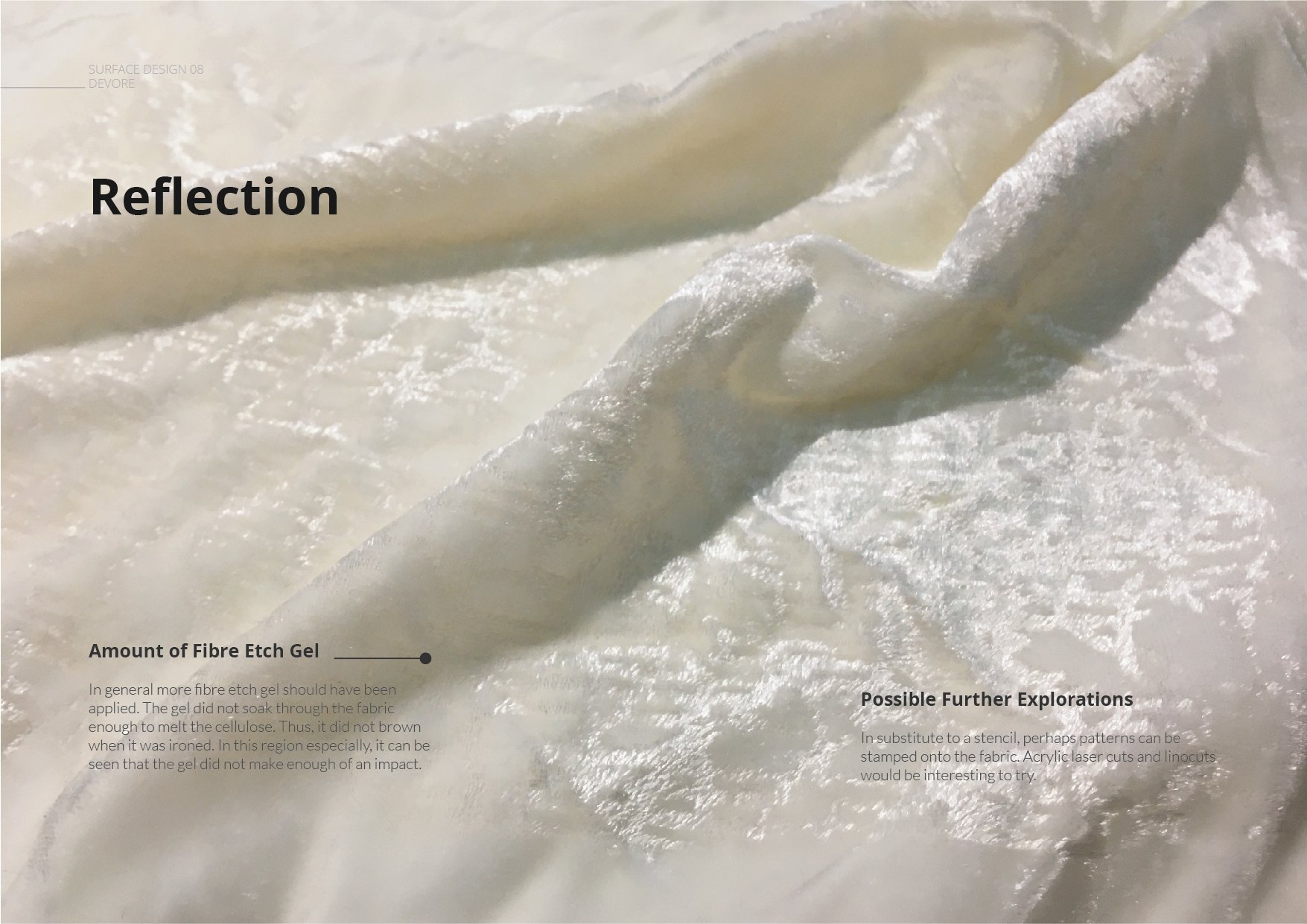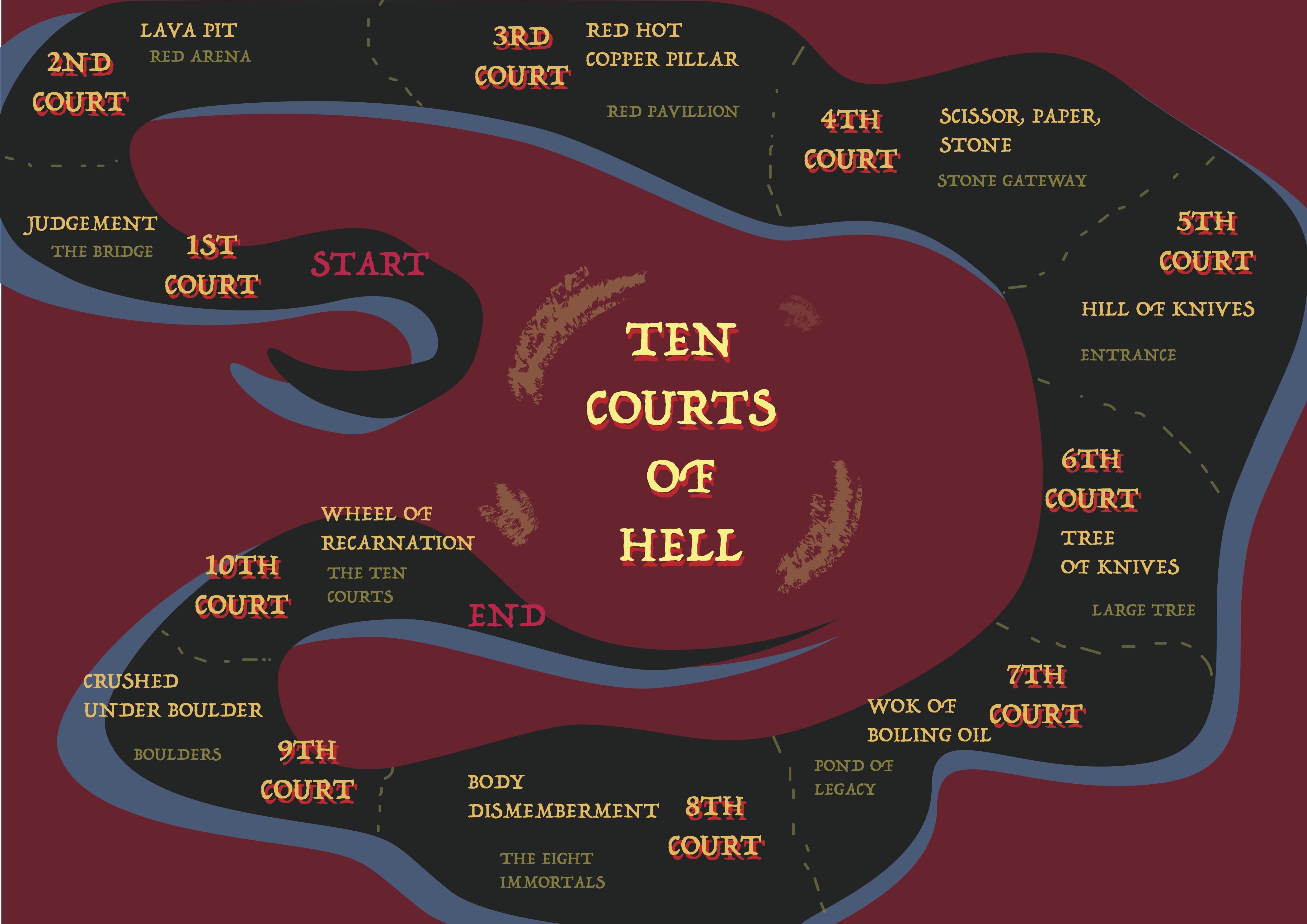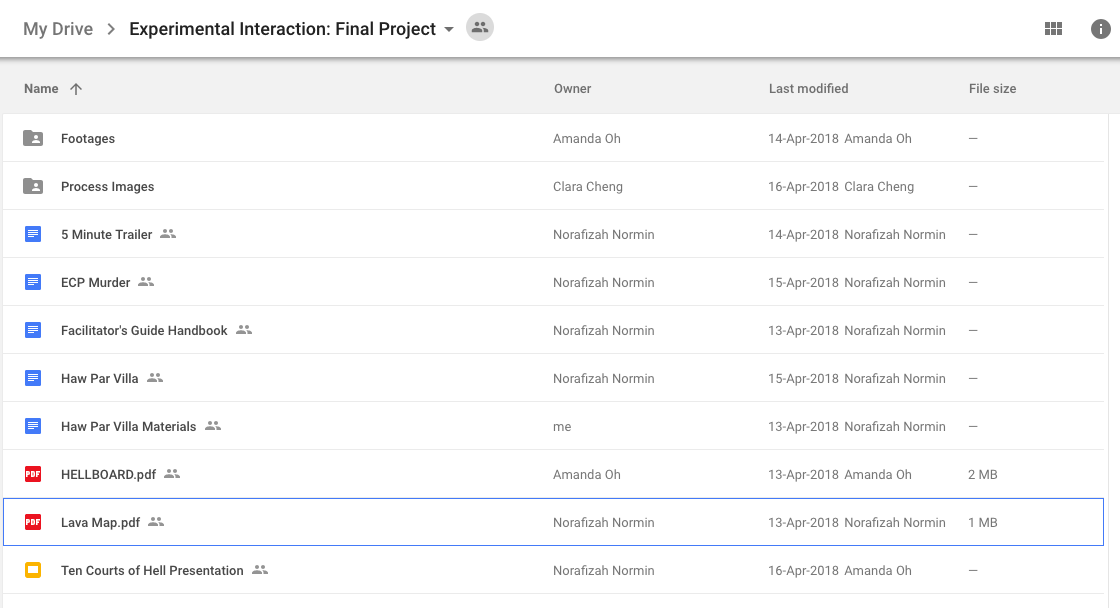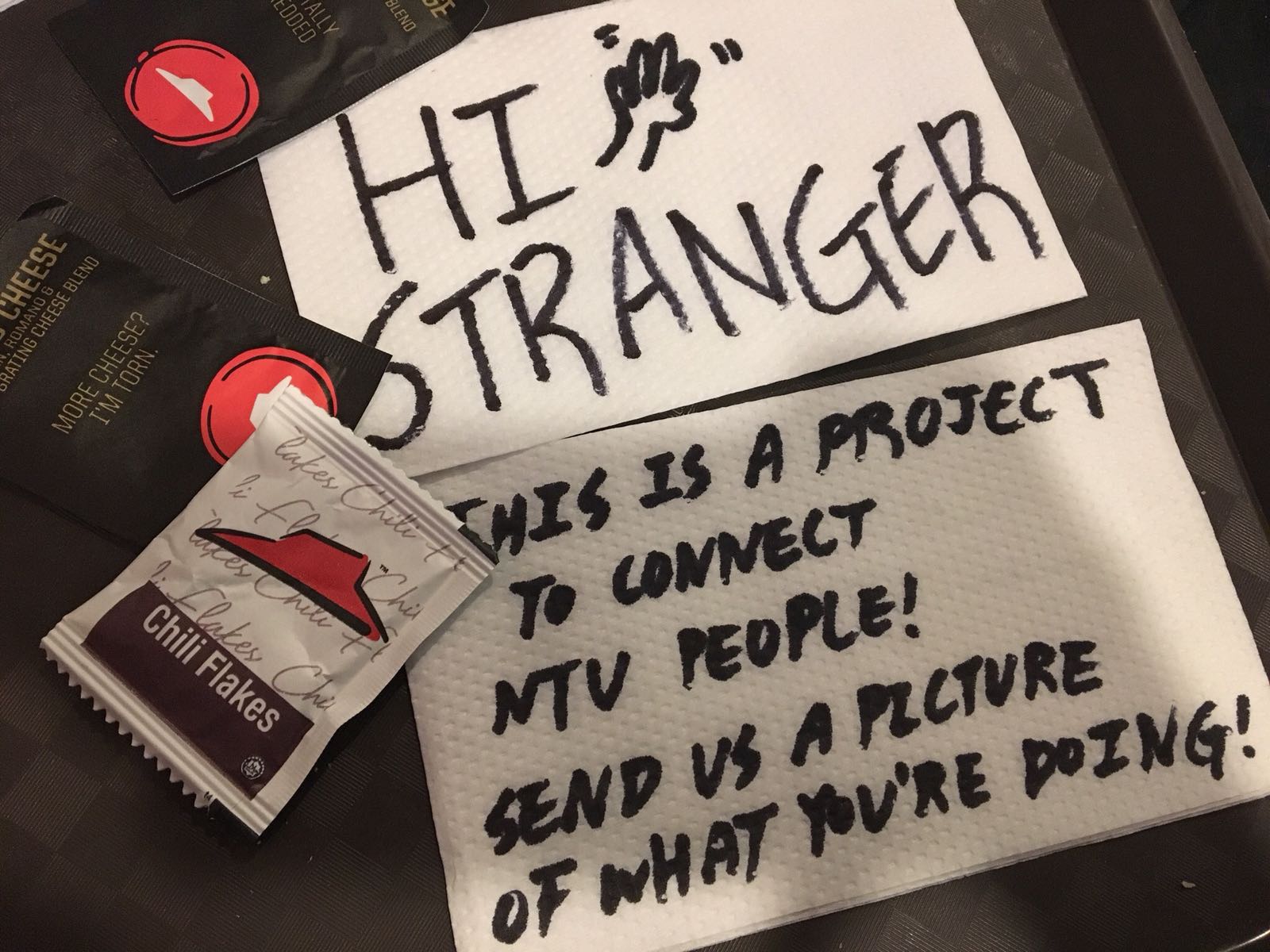





Briefly share your experience going through Dialogue in the Dark. What were some of the feelings, thoughts, challenges and insights gained while role playing a blind person?
Dialogue in the Dark allows visitors to go through the world visually challenged. This helped us be more aware of different senses like texture, sounds, smells, and so on.
Before going into the exhibition, we were asked to do a puzzle. One person will be blindfolded and the partner has to describe where to place the puzzle piece. Halfway through the activity I realized my partner does not have an overall image of what is on the puzzle or how many pieces were needed. I have overlooked the fact that she would want a general idea of what the puzzle would be like.
The exhibition included getting to try ordering and eating in a cafe in the dark. It stuck with me how the clerk described the cookie as palm size. In the light we would have been able to see the cookie and estimate the size. This helped me realize that detailed descriptions for visualizing an object is important for the visually challenged.
One of the questions I always had in mind was what is the best way to describe a scenery to someone who is visually challenged. Another related concern was how would I describe color. After going through the exhibition, I realized I could translate the visual experience into other sensations. For example, red could be explained as eating spiced on a hot sunny day.
Drawing on your experience, can you think and list some of the benefits inherent in the design research technique of role playing?
The biggest benefit that comes from role playing is how it can give you perspective. By placing yourself in the shoes of the user, you can experience it the way it was intended to be.
The exhibition really helped me gain perspective on what it was like to be visually challenged. For instance, there was an activity where we had to cross a road. The tactile paving and beeping from the traffic light helped us know where the road starts and when we can start crossing. Despite being a simulation it was still terrifying because I could not know how long the crosswalk is nor how many seconds I had to cross. It would be great if the traffic light could count the seconds and give the length of the crosswalk along with an estimate average number of steps it would take a person to cross it. Without the role playing in the exhibition, I would not have been able to attain this perspective.
Can you think of some contexts where role-playing can be useful to help discover and define design challenges or contribute to the development of design solutions?
Adding on to the idea that role playing allows users to get a fresh perspective, a context where role-playing would be helpful is the refining of a product development. A product is made to bring convenience. Thus, it should be easy and intuitive to use for everyone. ‘Everyone’ will mean taking into consideration different growth backgrounds, different body sizes and shapes, and so on. Role-playing will help designers to take into consideration various users and create appropriate features accordingly.
Another instance would be user experience in digital media (websites or apps), packaging, and even exhibitions. For example, Apple takes great care into the consumer’s experience when they unpack their products to the extent where they have a devoted to opening hundreds of prototype boxes. Their effort pays off because most consumers are unable to throw away the Apple packaging boxes. Role-playing is crucial in exhibition designs because every factor including lights or way the audience is allowed to interact with the space matters.
**For the comprehensive post click here
Group Members
Amanda, Clara, Fizah, Minjee
Final Project
Our final project was a board game called “Ten Courts of Hell”. Two players make up a team. One player will be in ADM playing the game on a physical board game. The other player will be in Haw Par Villa as the pawn. The two has to work together and communicate via Instagram Live. As they move along the board game, they will encounter at least 10 stations and each 10 stations will challenge the pair to work together to get through it. The ultimate goal is to reach the last station before the other team to win.
Research
Our ideas went through a drastic change. Initially we wanted to create a performance based on ghost and participant’s reactions. The participant’s interactions with the surroundings will influence how the ghost will act. However, we realized it is difficult to pursue this idea for three main reasons. First, a suitable location. Not only was it not site specific but it is also difficult to find a place where we could set up our performance without having to go through long processes of getting permission. Second, the idea was a bit complicated. It was hard for people to understand the idea when we explained it to them. This made us worried that there will confusion when we actually execute the idea. Lastly, we were not sure how to incorporate 3rd space.
After some consideration and getting inspired by the project “Can You See Me Now (2001)”, we decided to change our idea to a board game in Haw Par Villa. “Can You See Me Now” is a chasing game between the players online and players in the streets. We got the inspiration for 3rd space from here.
For research, the whole team visited Haw Par Villa in person. We learnt about the ten courts of hell and noted the punishments each courts give out. As we walked through Haw Par Villa, we found locations that resembled the punishment of each court and came up with ideas for games. For instance, one of punishments for the 2nd court is being drowned in a lava pit. We found a red arena in Haw Par Villa and decided to make our players play the “Floor is Lava” game.
Documentation

Above is the board game we created our game. Since this was a game that did not exist anywhere else, we had to personalize many of things. In addition to the board game, we created the dice. The dice only had the numbers 1 and 2 because there are only 10 stages in the game and we did not want the players to finish the game too soon.

The screenshot above is all the work we put into the final project. To highlight some of them, the “Facilitator’s Guide Handbook” is a PDF handbook we have made for our group mates, in other words the facilitators. This is to make sure we had a handbook we can always refer to when we forgot the instructions for the games or the location we have to move to. In addition, by giving the same instructions to the players we were able to ensure fairness. Another document is “Haw Par Villa Materials”. Some of the games included was balancing a pingpong ball on a spoon while going down a slope in a limited amount of time, going through a box of goo to find marbles, and so on. Each station had a different game and this meant that a different set of materials were required for each station. So in this document we created a checklist where we could make sure we have prepared all the things we needed.
To document the actual occurrence of the game, we had three people working as the camera crew for us. Two was recording each of the Haw Par Villa players while one was in charge of recording both the ADM players. The process could be also be viewed on Instagram Live.
(To view the videos for explaining each game for each station and trailer please check out the comprehensive post linked at the top)
Challenges & Reflections
I feel like the biggest challenge for our team was coming up with an idea that was not too complicated. Because we had a bit of an extensive idea at first which was great but maybe bit difficult to achieve, we had trouble coming up with an alternative to that. But in the end, I love the idea we came up with it and it went really well.
Another challenge was the actual preparation for the “Ten Courts of Hell” game. There was a lot to prepare. Ten different games placed in ten different locations that is related to each court of hell. The materials and rules had to be settled as well.
Testing out each game really helped us polish up the game and be ready for any confusions during the actual execution. Sometimes we would also realize we need to change the rules so we can incorporate both the ADM player and Haw Par Villa player.
Overall regardless of all the hours and work we had to put in, I am proud of our team and work. It almost felt like a mini Freshman Orientation Camp (FOC). Which is funny because all the members of our group are part of the Programmers for camp next year. I feel like the incorporation of Third Space worked well because the ADM players and Haw Par Villa Players did not have much trouble interacting with each other via Instagram Live. In addition, we were able to have feedback and input from live streaming audience on Instagram. For example at one point, there was a viewer who was telling us it is going to rain soon. However, there is one thing I feel like I could have done better as an facilitator. While going over the videos taken to create the trailer, I realized I was too excited and into the game. I could have been more neutral and partial. For instance, when the opponent team was having technical trouble with their camera, I should have perhaps paused the game to give them more time to deal with it.
Our collective artwork was focused on receiving images from viewers via Airdrop. The role of the artist was minimal as all we had to do was send an image requesting viewers to send an image back. The role of the viewer was crucial as we wanted a collection of images from strangers showing what they were doing at the moment.
Our goal was to create a collaborative album of our lifestyle in NTU through interactions with strangers.
Although there is no physical interaction, it is a DIWO because this project makes use of Airdrop which according to Marc Garrett in his DIWO article is “an umbrella term for various ‘art and technologically’ related practice”. This makes it different from traditional art because:
1. It requires and is created through the immediate response of the audience who become co-creators.
2. The artists no longer have control over their work. It will be re-edited and further developed freely by the audience.
3. As Garrett says, it “…go against the concept of scarcity and ownership. This prevents branding for economic value.”
The project is somewhat similar to the Human Clock by Craig D. Giffen.


Like the Human Clock, the Airdrop project requires photo contributions from strangers and like Garrett says, “it’s core values also involve self-governance” because we have no control over what photos we will receive. However, the difference is that it had specific directions on what photos to send and the co-creators of the art can view other people’s photos as well.
Our first attempt took place in the ADM library and ADM lounge.
This ended in failure as although we did acquire few photos, the contributors were not total strangers. They were ADM people helping out ADM people.

We thought the problems were:
1. Unspecific instructions
2. Not enough people with their Air Drop on
3. People being suspicious or unwilling to accept a photograph from a stranger
With these in mind, the second attempt took place in areas like the North Spine Canteen and Lee Wee Nam library where there are a wider range of possible participants.

The changes we made was to make use of the AirDrop preview function. This allows the person to see the photograph we will be dropping to them. So we decide to make the font of the photo bigger so that the participant can see what we’re sending them. Also, we made the request more specific and moved to a new location.
Despite these efforts, the project ended in failure.
We can learn from this that the platform we choose for DIWO and media art in general (especially if it requires participation from audience) should be easily accessible to everyone.
THE INNER SELF
VIDEO LINK
https://www.facebook.com/minjee.cheon.5/videos/2005737919696007/
PERFORMERS
Azizah Nur, Minjee Cheon
DESCRIPTION
For our network culture micro-project 3, we thought of taking advantage of the split screen to create symmetry. To create a symmetry or a mirroring image, we decided to present simple gestures so that the viewer will be able to understand what we are trying to convey through our live video. One example is clapping hands together.

After that, we created symmetry by showing half of our faces on each side.


Lastly, we each drew half of an animal, a portrait, and a scenery. We did not discuss what we will be drawing. The only information we shared was that Azizah will draw the bottom half and Minjee will draw the top half.


WHERE IT WAS PERFORMED
We had two takes and both were performed in separate hallways. For the second take, we applied an additional idea to use different color backgrounds. Azizah used the white wall as a background while Minjee used a black door.

OBJECTIVES
The objective was to show how our inner selves are different and unique. We are able to copy other people’s actions, but we cannot lie to ourselves who we truly are. How we can copy other people are shown through the hand gestures and facial expressions while who we truly are is shown through the different drawings we drew.
OUTCOMES
Overall the performance was decent. Although our timings for doing our tasks simultaneously was not perfect, it was enough to get the message across. We could definitely see some improvements in the second take so we would be able to improve further if we have any more projects like this one.
DIFFICULTIES
1. We had difficulty mirroring each other. As we were in different places at the same time, it was hard to do the same actions simultaneously. The timings we matched prior to doing the live broadcast was hard to keep up with. Hence, we had to keep looking at the screen and following each other’s movement.
2. The first drawing of the animal was a failure because we did not rehearse before going on live. But after that, we know our mistake and overcome it.
3. Internet connection. This was something we did not have control over and did not take into account when we did decided to do the same actions simultaneously. Sometimes there were delays in the live streaming and made it more difficult to do the actions at the same time.
OVERALL EXPERIENCE
Despite facing some confusions like not knowing how to add another person to do Facebook live with, we enjoyed the process of creating a new space and trying to add meaning to it. Neither of us have never used Facebook live before so it was a new experience for us both.